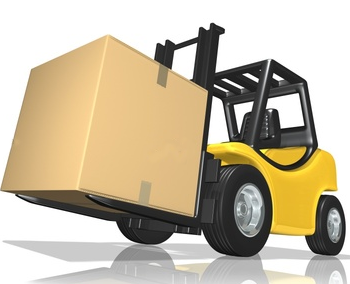The productivity of your warehouse is determined by not only the number of forklifts you own, but also the type of forklifts you have. Among the various selections of forklifts, two of the most commonly used are electric and gas forklifts. Whereas the former is powered by electricity, the latter relies on liquid petroleum gas (LPG) to stay alive. As warehouses seek to increase workplace efficiency, the question, “Which forklift is more efficient? Electric or gas?” becomes a fundamental inquiry that is worth exploring. Read on as we describe the strengths and weaknesses of the two different ways to power your lift truck.
 Electric 1.5 Tones Forklift
Electric 1.5 Tones Forklift
Electric Forklifts
Considered as the most eco-friendly forklifts, electric forklifts do not give off harmful emissions and are completely fume free in operation. They are 100% powered by electricity which, according to Warehouse IQ, can reduce approximately 20 to 50% of the costs it takes to operate a gas forklift per month. Because the battery weight of an electric forklift acts as an effective counterbalance, warehouses can take advantage of electric forklifts’ superior maneuverability and enjoy their quiet, but faithful services. Electric forklifts are also available in 3-wheel and 4-wheel configurations. The 3-wheel electric forklifts are great for narrow aisles due to their small and delicate turning ability, while the 4-wheels offer greater stability and gradeability to help you handle heavy materials in steeper environments.
Disadvantages
While considerably cheaper in its maintenance and service life, electric forklifts require a much heftier upfront investment due to their battery and charger. Although the cost of recharging the battery overnight is much less than doing a gas refill, electric forklifts cannot be used during recharge mode and can seriously slow down your work pace. Warehouses that consider electric forklifts also need to make room for a battery charging station, which further limits your storage space.
 Gas 5.5 Tones Forklift
Gas 5.5 Tones Forklift
Gas Forklifts
A definite popular forklift choice for their competitive initial cost and convenience for around-the-clock work. Gas forklifts do not need to be charged and tend to perform much better in travel speeds, rates of acceleration, and lift efficiency than their electric and diesel powered counterparts. While electric forklifts are limited by charging constraints and can only be operated on smooth indoor floors, the robust gas forklifts excel both in indoor and outdoor environments regardless of weather or temperature.
Disadvantages
Despite the competitive pricing of gas forklifts, the maintenance of these forklifts are definitely the highest of both electric and diesel powered lift trucks. With fuel costs on the rise, gas forklifts can take a serious toll on your budget, making it a necessity for warehouses to diversify their workhorse team and use alternatively powered forklifts.
Keeping Your Business in Perspective
Both electric and gas forklifts have their own strengths and weaknesses. Although electric forklifts are economic in the long-run, their heavy initial investment and working constraints make them inadequate in workplaces that require overnight and outdoor operation. Meanwhile, the versatility of gas forklifts is frustrated by its hefty maintenance and fossil fuel cost. As a result, it is important for warehouses to examine their personal business needs and tailor their purchases towards the type and nature of their material handling routine.



